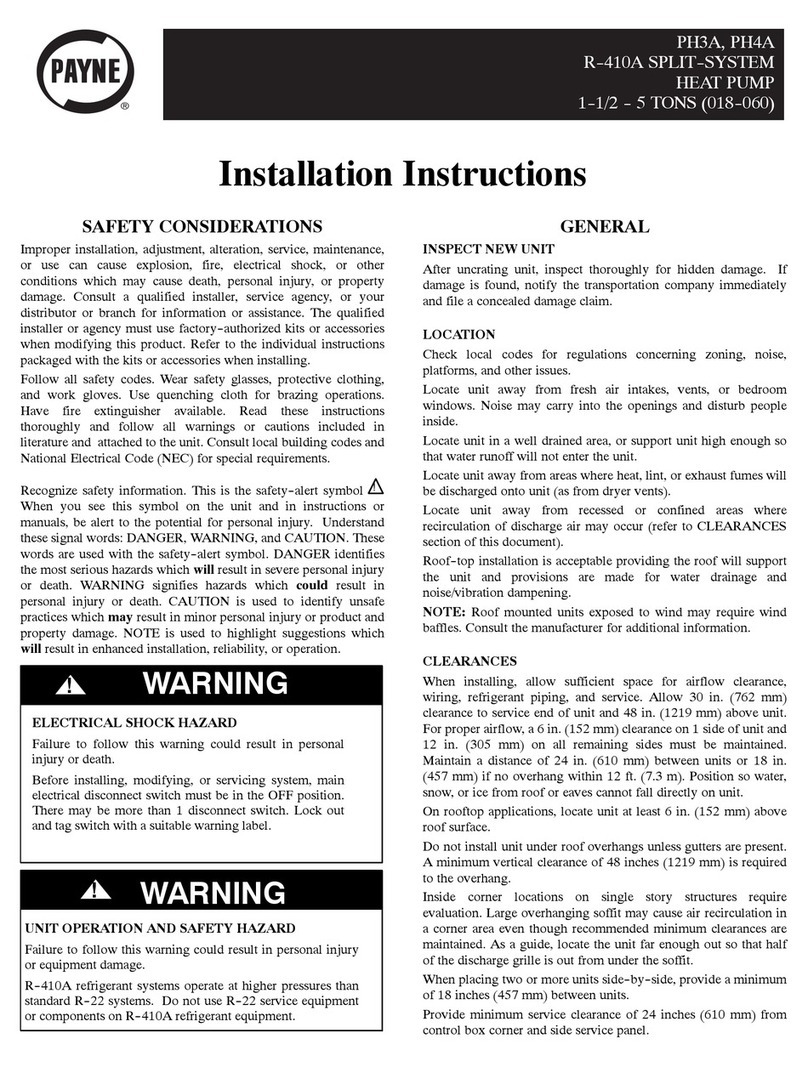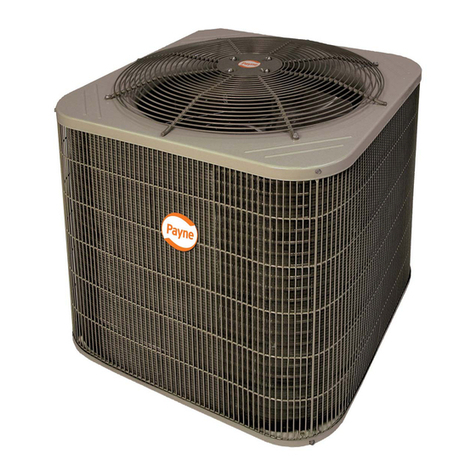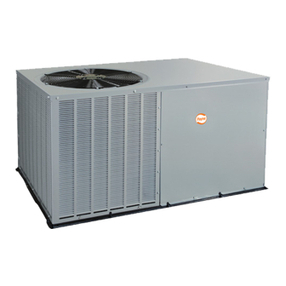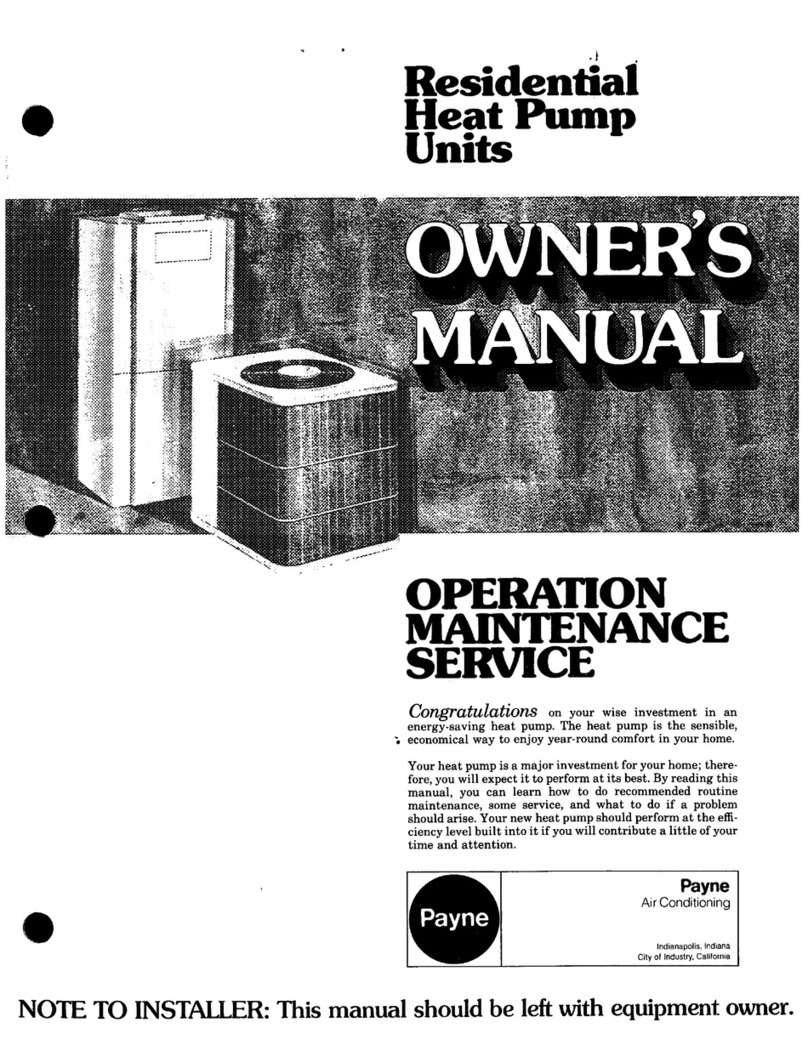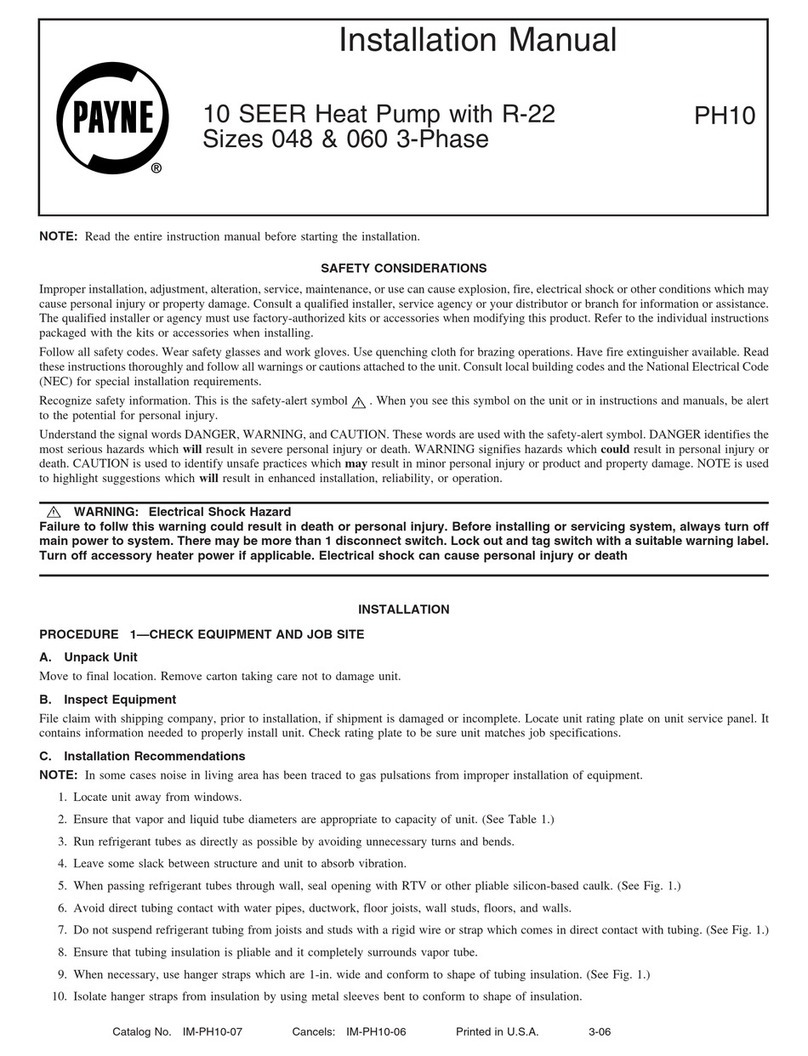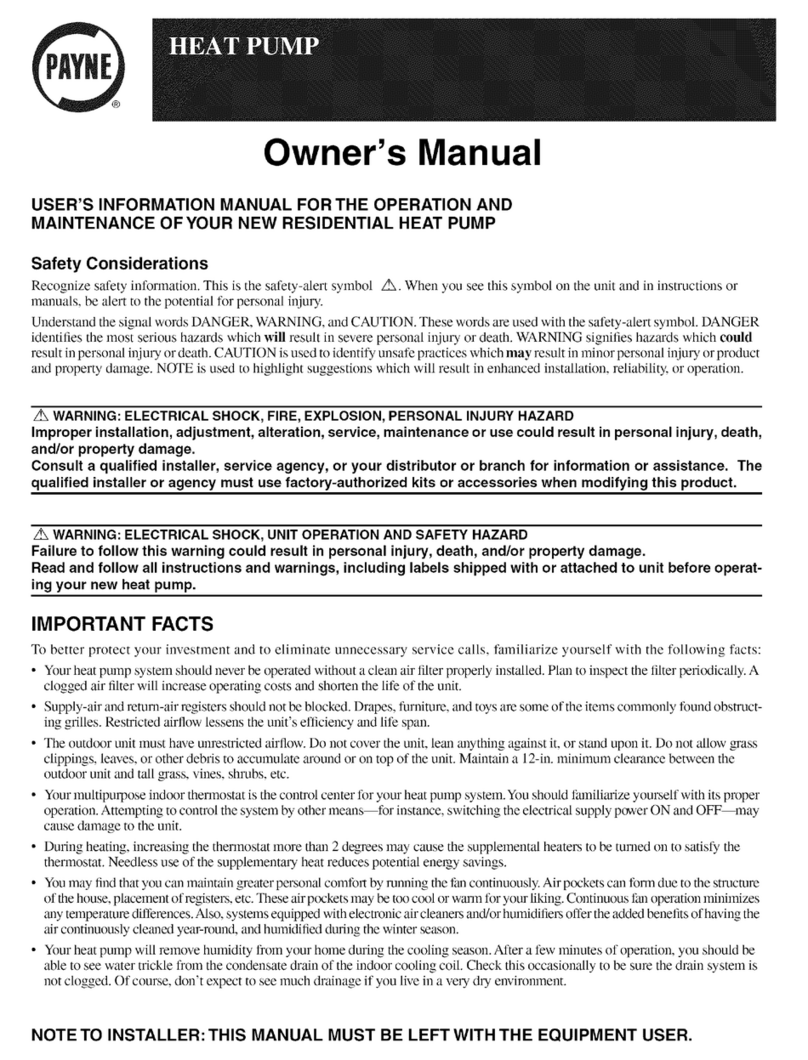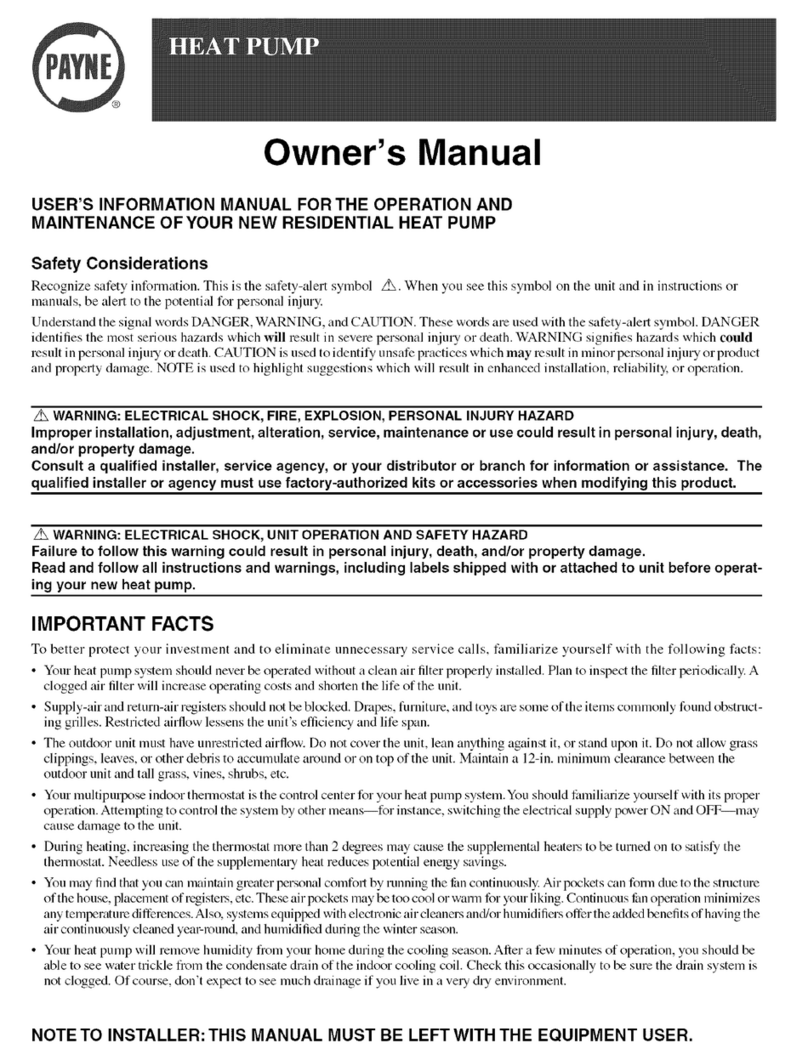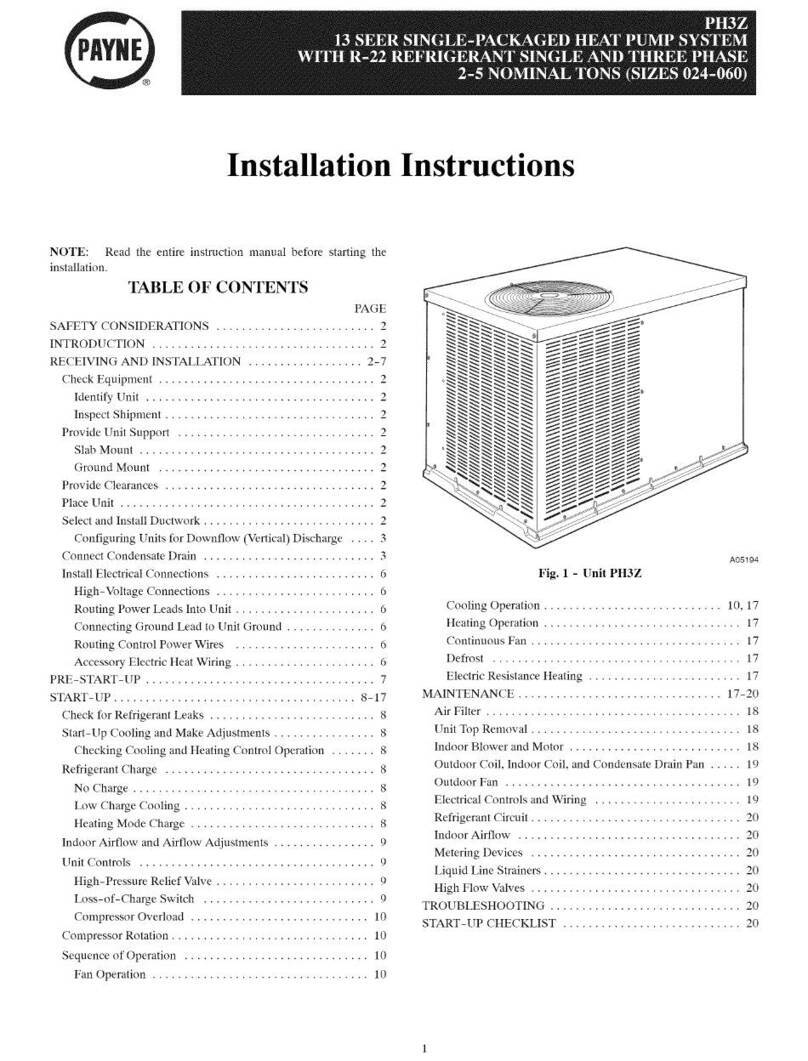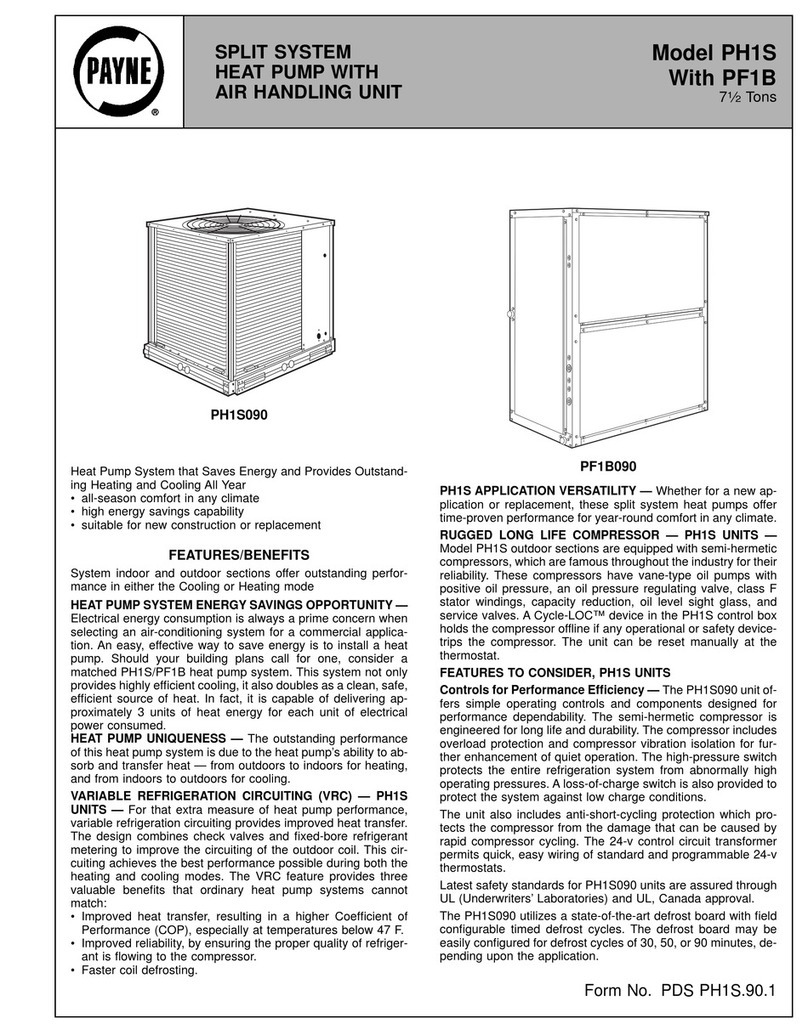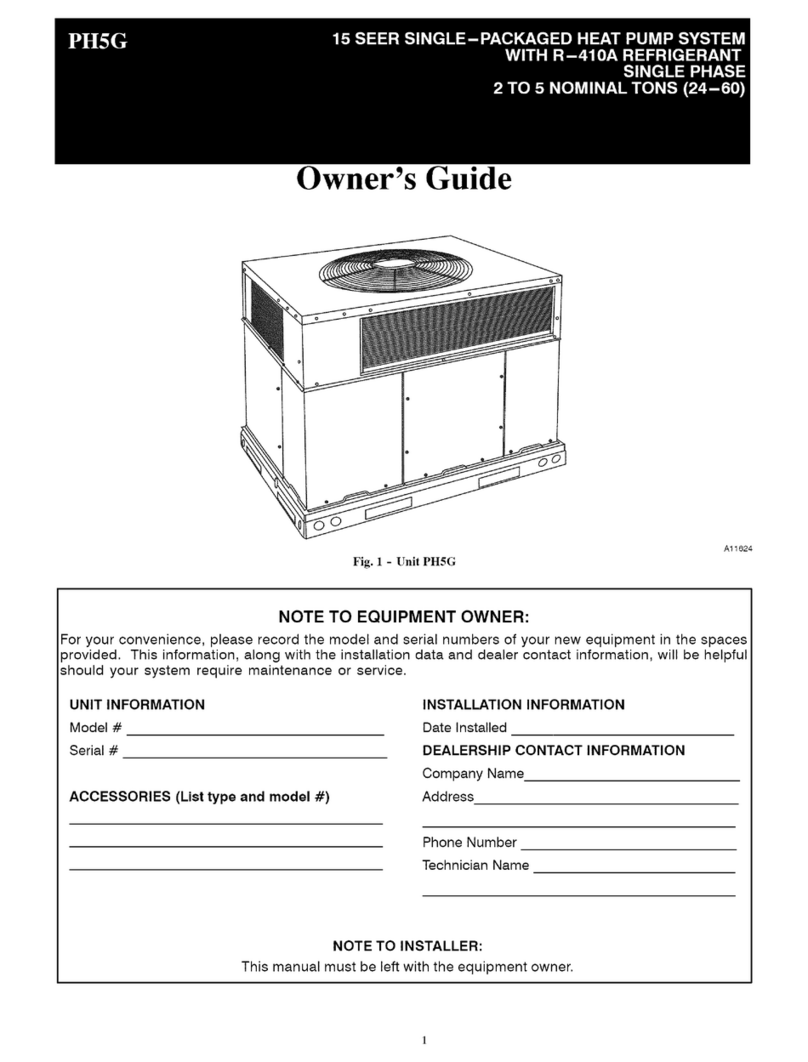SAFETYCONSiDERATiONS
Recognize salL'ty inlk_rmation. This is tile salety-alert symholz_ x . When you see this symbol on unit or in instructions and manuals, be alert to
potential liar personal injnry.
Understand the signal words DANGER, WARNING, and CAUTION. These words are used with the salL'ty-alert symboh DANGER identifies the
most serious hazards which will result in severe personal injury or death. WARNING signifies hazards which could result in personal injury or
death. CAUTION is used to identify unsalL" practices which may result in minor personal injury or product and property damage. NOTE is used
to highlight suggestions which will result in enhanced installation, reliability, or operation.
z_x WARNING: FiRE AND ELECTRICAL SHOCK HAZARD
improper installation, adjustment, alteration, service, maintenance, or use can cause explosion, fire, electrical shock, or
other conditions which could cause serious injury, death or property damage. Consult a qualified installer, service agency,
or your distributor or dealer for information or assistance. The qualified installer or agency must use factory-authorized kits
or accessories when modifying this product.
YOUR COMFORT SYSTEM
A. identifying Your System
Take the time to lhlniliarize yourself with your packaged heat ptnnp type of system. This knowledge will be of use in understanding the basic
operation of your new heat pump. The unit has a rating plate affixed to it which provides necessary inlk)rmation liarspecific identification of a unit.
You should familiarize yourself with the product, model, and serial numbers listed on each rating plate. Record them lor luture relL'rence in the
space provided at the end of this booklet.
iMPORTANT FACTS
To better protect your investment and to eliminate unnecessary calls, familiarize yourself with the li_)llowing li_cts:
1. Your heat pump system should never be operated without a clean air filter properly installed. Plan to inspect the filter periodically. A
clogged air filter will increase operating costs and shorten the lili_of the unit.
2. Supply-air and return-air registers should not be blocked. Drapes, furniture, and toys are some of the items commonly limnd obstructing
registers. Restricted airflow lessens the unit's efficiency and lilt span.
3. The outdoor unit nmst have unrestricted airflow. Do not cover the unit_ lean anything against it, or stand on it. Do not allow grass clippings,
leaves, or other debris to accumulate around on top of the unit. Maintain a 12-in. n_ininmm clearance between the outdoor unit and tall grass,
vines, shrubs, etc.
4. Your multipurpose indoor thermostat is the control center liar your heat pump system. You should familiarize yourself with its proper
operation. Attempting to control the system by other means liar instance, switching the electrical supply power ON and OF_may cause
damage to the unit (See Fig. 4).
5. During heating, increasing the thermostat setting more than 2 degrees may cause the supplemental heaters to be turned on liar a short period
of time to satisly the thermostat. Needless use of the supplementary heat reduces potential energy savings.
6. You may find that you can maintain greater personal comli_rt by rtmning the fan continuously. "Air pockets" can limn due to the structure
of the house, placement of registers, etc. air pockets may be too cool or warm liar your liking. Continuous fan operation minimizes any
temperature dil_i_rences. Also, systems equipped with electronic or mechanical air cleaners and/or humidifiers ol_i_r the added benefits of
having the air continuously cleaned year-round and humidilied during the winter season.
7. A system equipped with a heat or energy recovery ventilator ol_i_rsthe advantage of exhausting stale air fi'om the home and allowing fresh
air in fi'om the outdoors while minimizing heat loss.
8. Your system may also be equipped with a zoning system which allows individnal control over the temperatures of separate areas of your
home.
9. Your heat pump will remove humidity from your home during the cooling season. Alter a IL'wminutes of operation, you should be able
to see water trickle from the condensate drain. Check this occasionally to be sure the drain system is not clogged. Of course, don't expect
to see much drainage if you live in a very dry environment.
10. During the heating cycle, air from your registers may seem cooler than you might first expect. This is because your heat pump delivers a
constant flow of air at around 90"F to 105°F instead of sudden bursts of hot air as with a conventional furnace. This air may libel cooler
because it is slightly less than your skin temperature. However_ it is sulTiciently warm to keep you comlk_rtable.
11. Ice or fi'ost will tend to lkmn on the coil during the winter heating operation. Your heat pump is designed to automatically melt the ice. When
in this defrost cycle, it is normal lk_rsteam or ling to rise from the outdoor unit. Do not be alarmed!
12. Do not operate your unit in cooling mode when outdoor temperatures are below 55"F unless your unit was modilied liar low-ambient
operation.
13. Do not operate your unit in heating mode when outdoor temperatures are above 66°F unless you set your thermostat to emergency heat
mode.
/_ WARNING: FiRE AND ELECTRICAL HAZARD
Failure to follow this warning could result in personal injury, death and/or property damage.
To prevent serious injury, death, or property damage, read and follow all instructions and warnings, including labels shipped
with or attached to unit before operating your new heat pump.
OPERATING YOUR HEAT PUMP
The operation of your heat pump system is controlled by the indoor thermostat. You simply adjust the thermostat arid it maintains the indoor
temperature at the level you select. Most thermostats li)r heat pump systems have 3 controls: a temperature control selector, a FAN control, and
a SYSTEM or MODE cnntroh
2



